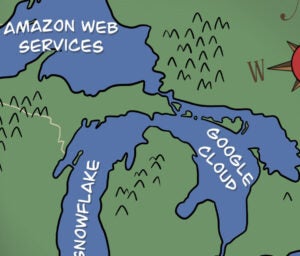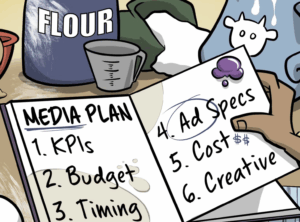Jet.com has been quietly pitching publishers on changes to its payment structure related to affiliate commissions.
The message is clear: Work with Jet and it’s prepared to pay you for the privilege.
Affiliate bucks often go to the more established players like Amazon or eBay.
But in order to incentivize publishers to send traffic its way, the younger Walmart-owned ecommerce company is increasing its affiliate commission rates to as high as 15% to 20% in certain product categories via its affiliate network partner Rakuten LinkShare.
It’s not uncommon for rates to dwell in the lower single-digit range across competitors.
Jet.com’s affiliate rate increases are an obvious way to lure more premium partners to Jet.com. BuzzFeed is one publisher that’s taking advantage.
In an environment where one product may be sold on multiple ecommerce platforms, a competitive commission rate is one way to earn more business.
And not every advertiser, particularly those in the luxury vertical, has a presence on Amazon or eBay, so it’s important for publishers to keep a diversified mix to drive new revenue opportunity, according to Tony Zito, CEO of Rakuten Marketing.
“We’re less than two years old at Jet.com, so we’re always looking for ways to get the brand out there and create deeper relationships with publishing partners,” said Sumaiya Balbale, VP of marketing for Jet.com. “It was clear to us that content-enabled commerce is a huge trend in the industry and an area of the business that’s evolving.”
Jet.com isn’t sharing which categories earn higher affiliate commission rates, only that it offers numerous variables in publisher cuts.
Jet’s affiliate program page, however, indicates that there are “high-paying incentives” for certain events, such as facilitating a new customer purchase within the Jet.com mobile app or referring a new customer to Jet.com’s fresh grocery delivery service.
AdExchanger Daily
Get our editors’ roundup delivered to your inbox every weekday.
Daily Roundup
“We’re moving against a variety of different objectives,” Balbale said. “To the extent that we can assign value to those programs, we look to align with publishers who are a fit from an audience and brand perspective.”
In the case of BuzzFeed, its large millennial and urban-dwelling demo meshes well with Jet.com’s goal of growing its grocery delivery service. An affiliate agreement in that category is a natural fit.
 BuzzFeed works with multiple ecommerce affiliate partners, but Jet.com’s emphasis on cost savings and competitive pricing really resonates with BuzzFeed readers, said Nilla Ali, affiliate commerce lead for BuzzFeed’s product labs.
BuzzFeed works with multiple ecommerce affiliate partners, but Jet.com’s emphasis on cost savings and competitive pricing really resonates with BuzzFeed readers, said Nilla Ali, affiliate commerce lead for BuzzFeed’s product labs.
Jet’s fresh grocery category in particular “especially aligns with our food-obsessed audience,” Ali said.
Competitive affiliate commissions aside, another benefit for Jet.com is exposure to nonendemic audiences.
In certain categories where Jet.com isn’t as well-known as a commerce destination, such as home goods, affiliates will be more about brand building and establishing “credibility” than pure customer acquisition, Balbale said.
“It’s creating the right incentive structure for [those publishers] to reach customers engaging in different categories where Jet.com traditionally may not have played,” she said.
Setting up quick wins like rev-share links on the back end are good for Jet.com’s bottom line, but to Jet, affiliate advertising is less about driving revenue than it is an opportunity to collaborate with brands, Balbale said.
“Outside of having the right audience fit for an [affiliate] partnership, one of the core reasons why a publisher might choose us is this demand for transparency,” she said. “We’ve always tried to apply that principle, not just to our customers but our suppliers.”













